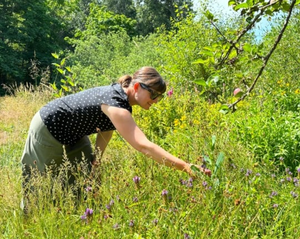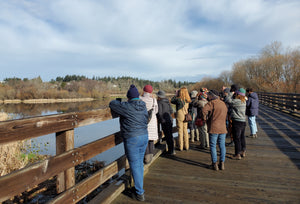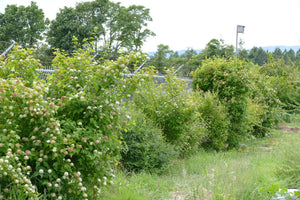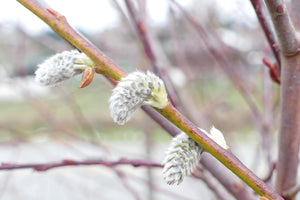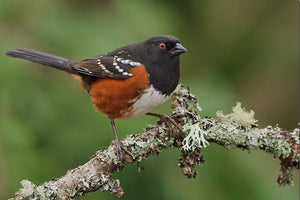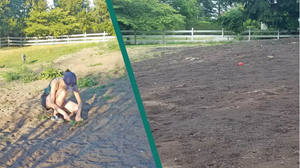Tips on Seeding for Wildflowers

Tips on Seeding for Wildflowers
By Paige Erickson-McGee and Kristen Miskelly
Thank you for your all the enthusiastic responses and inquiries this season, here are a few answers to those top questions.
What is sowing?
Sowing is a synonym to scattering (seed) over land, earth, or soil, for the purpose of growth.

How do I dilute my seed for spreading?
Using an inert "carrier" such as vermiculite, perlite, sand, or sawdust with the seed can allow it to be spread easier, distribute more evenly, and help you visually track where the seed has already fallen. A general ratio t o follow is 1/2 cup of carrier for every 1m 2 of area t o cover. Therefore,
How you blend your seed with a carrier depends on the total volume. A small pail or bucket is sufficient for most mixes. Larger areas may require a large tote or wheelbarrow where seed is blended and then transferred into a bucket for distribution.
When should I sow my seed?
Sowing your seeds at the right time of year is one of the most important determents for successful seeding. Local seeds are adapted to germinate during ideal conditions and to stay dormant when conditions are inadequate for their successful establishment. Early fall is usually the best time to sow native species (September-October) because it mimics when the seed naturally comes to maturity from spring through fall. Early spring (February/March) is also a suitable time for sowing seeds for some species. There are cases where seeds for some species can be sown during summer, but this is more often the exception.
Seedlings typically have a long window of time when they are small and fragile. It is important to allow the time they need to go from a seed to maturity. The duration of time from seed to maturity depends on the species. Seed Sowing Timing:
Option 1: Seeds are sown in fall and germinate fall (e.g. Sea Blush, Miner’s Lettuce, Field Chickweed, Western Buttercup, Woolly Sunflower, California Brome)
Option 2: Seeds are sown in fall and germinate spring; require cold stratification (e.g. Red Columbine, Broad-leaved Shootingstar, Great Camas, Alaska Oniongrass).
Option 3: Seeds are sown in early spring and germinate soon after (e.g. Sea Blush, Miner’s Lettuce, Entire-leaved Gumweed).
Some species hold their dormancy over longer periods of time and require fluctuations of moisture and temperature to trigger their germination. The duration and varying fluctuations are species-specific. This phenomenon is called cold stratification. Species that require cold stratification break dormancy in our area between winter and spring. The timing depends on the species. If species that require cold stratification are sown in spring, they will not germinate until the following spring after they have experienced a winter.
What should I expect to see in the first year after seeding?
You may see some flowers in the first year from our native wildflower blends, but not necessarily all of them will bloom. If your seed doesn’t germinate the first year it has not gone bad, it is just waiting for the right conditions. Many perennials don’t flower in their first year, some of the bulb species (Great and Common Camas, White Fawn-lily) take up to 7 years to produce their first flower. All annuals flower in their first year (e.g. Sea Blush, Farewell-to-Spring) and some perennials do as well (e.g. Yarrow, Woolly Sunflower). If you would like only seeds that typically flower within the first year or two, you can request a custom blend that is suitable for your garden or site conditions.

Have more questions about seeding?
> Seeding Frequently Asked Questions FAQ (link)
> Sowing Your Seed Instructions Manual (PDF)
> Creating Meadows for Pollinators (video webinar)
- Satinflower Nurseries

